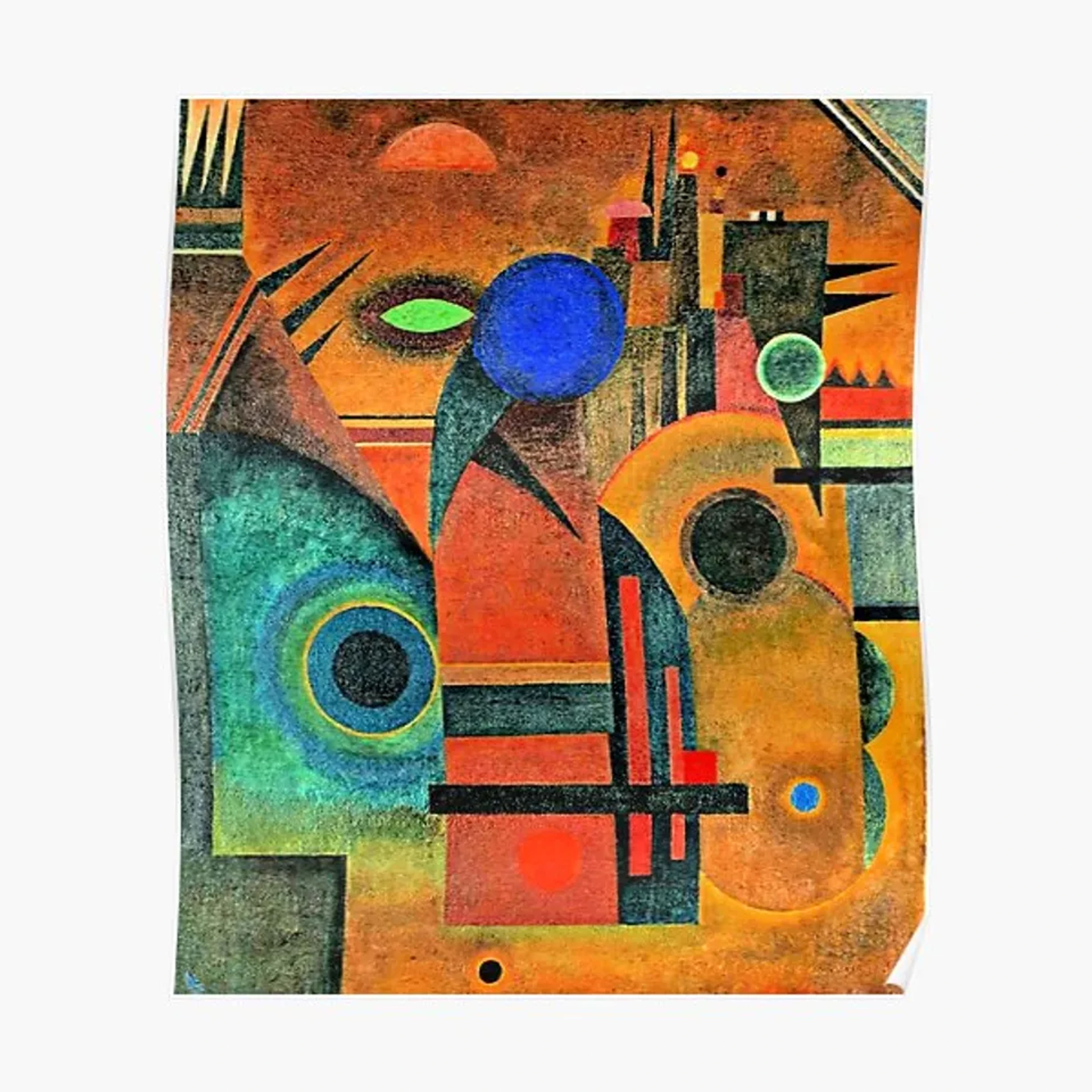
Marketing Abstract Art Online: A Candid Guide for Artists
An artist's candid story and practical guide to marketing abstract art online. Discover website photography tips, SEO, social media strategies, community building, and personal branding to connect your art with the world.
Marketing Abstract Art Online: A Candid Guide for Artists
I remember the smell of fresh paint, the satisfying resistance of a palette knife against a raw canvas, and the quiet hum of my studio. For me, creating abstract art has always been a deeply tactile, intensely personal experience. Then, the internet decided it needed a piece of that action, and my first thought was a dramatic, 'Oh dear, another thing to master!' It felt a bit like being told your beloved paintbrush now needed a WiFi connection. This article is my candid story, sharing the often-amusing lessons learned and practical strategies developed on this digital journey to market abstract art – a journey I hope can light a path for fellow artists navigating these sometimes bewildering online waters.
The Initial Hesitation: My Digital Awakening
For years, my marketing strategy was... well, mostly hoping someone would trip over a painting in my studio or hear about me through a whispered rumor at a local coffee shop. The idea of marketing my art, especially abstract art which thrives on in-person interpretation – that undefinable shift in light, the palpable texture, the sheer, immersive scale that a screen simply can't replicate – felt almost counter-intuitive, let alone doing it online. It wasn't just the practical hurdle; there was a deeper, almost philosophical conflict. My studio felt like a sanctuary, a private space where creation was a deeply introspective dance between me and the canvas. The thought of thrusting that vulnerable, personal process onto a public, often noisy, digital stage felt... well, a bit like inviting strangers to watch me think. I just wanted to paint! The thought of SEO, hashtags, and 'engagement rates' was enough to send me scurrying back to my easel, muttering about the good old days.
But the world, and the art market, shifted. What was once optional became essential. It wasn't enough to just create; if people couldn't find my work, it might as well not exist. This realization, coupled with a healthy dose of FOMO (fear of missing out, for those of you also new to acronyms), kick-started my own reluctant but necessary digital awakening. It was time to trade some of my paint-stained clothes for... well, probably still paint-stained clothes, but now with a smartphone in the pocket. The click of a 'publish' button might not hum like a brush against canvas, but it’s a hum all the same, a new rhythm in my creative life.
Crafting My Digital Home: The Website – More Than Just an Online Gallery
My website became my digital studio, my virtual front door to the world. It’s where my art lives, yes, but it’s also where my story lives. It’s where I get to set the tone, share my personal philosophy and artistic vision, and invite people into my world on my own terms. Getting it right, though? That was a journey.
One of the biggest hurdles was actually showing my art online. Capturing the texture, the subtle shifts in color, the sheer presence, the minute layering of pigment – the intangible soul – of an abstract painting through a lens is an art in itself. It's not just about good lighting; it's about conveying depth, gloss versus matte, and even the subtle play of light that changes with viewing angles. I've had my fair share of 'that looks nothing like it in real life!' moments, which always felt like a tiny betrayal of the work itself. Learning how to properly photograph artwork for web and print became as crucial as mixing paint.
The Technical Dance of Capturing Abstraction Online
This isn't just point-and-shoot. For abstract art, the nuances are everything. I learned the hard way that good color accuracy under controlled lighting (think soft, diffused natural light or professional studio lights to minimize harsh shadows and glare) is paramount. A good camera, even a modern smartphone, combined with a tripod for stability, allows for sharp, high-resolution images. I often use a color checker card in my initial shots to ensure accurate color representation in post-processing. And speaking of post-processing, learning basic editing in software like Lightroom or Photoshop to adjust exposure, white balance, and contrast without altering the art's integrity is vital. It's about translating the work's physical essence into a digital format that does it justice, like trying to describe a dream without losing its vibrant, illogical core. Have you ever felt that frustration when a photograph just doesn't capture the essence of your work?
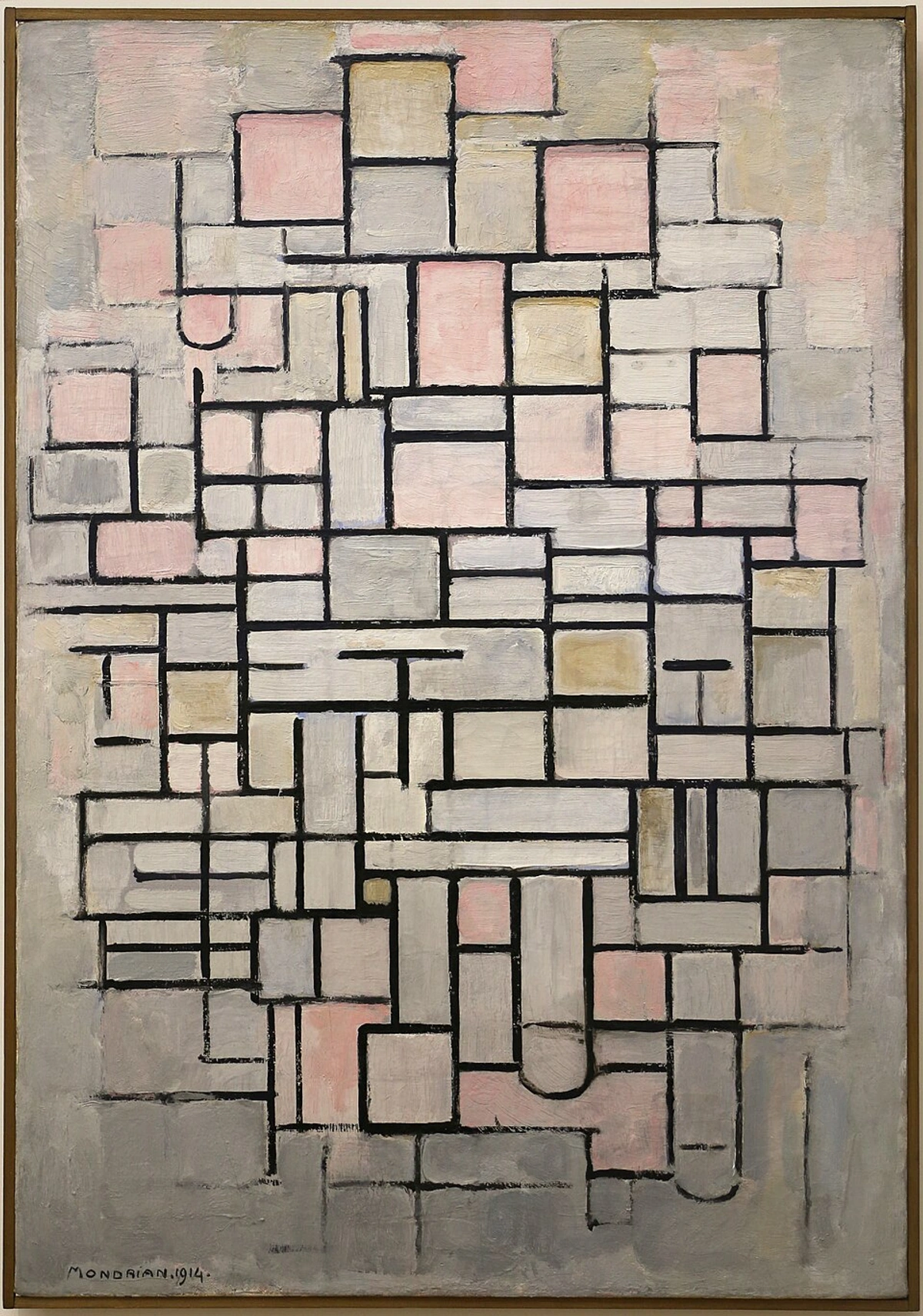
https://commons.wikimedia.org/wiki/File:Piet_mondrian,_composizione_n._IV-composizione_n._6,_1914,_01.jpg, https://creativecommons.org/licenses/by/3.0
For abstract artists, specific website features are paramount: high-resolution images with zoom functionality to allow viewers to explore texture and brushstrokes, clear pricing and dimensions, and dedicated sections for artist statements that offer context to each piece or even a 'process' section detailing my creative process: from concept to canvas. Beyond showcasing the art, a clear 'About Me' or 'Artist Bio' section is vital. It's where you share your journey, your influences, and what truly drives you – that connection makes your art resonate even more. My website is now the anchor, the place where potential collectors can explore my art for sale and truly get a feel for what I do.
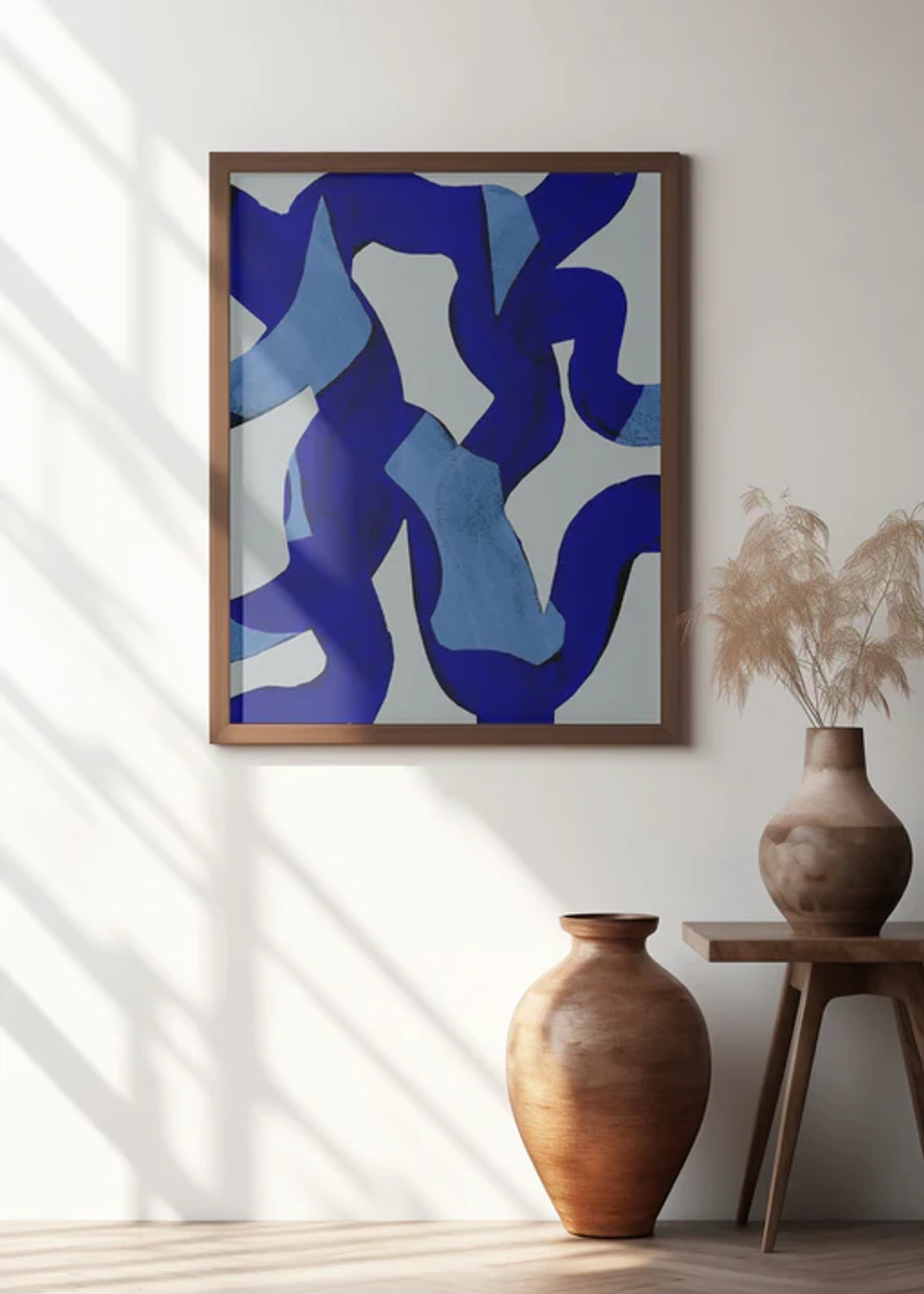
https://www.modernmemorydesign.com/collections/abstract-wall-art-for-home-decor, https://creativecommons.org/licenses/by-nc/4.0/
It's also where the importance of SEO (Search Engine Optimization) first truly clicked for me. It's not just about being found; it’s about ensuring that when a collector does search for "textured abstract art for modern living rooms" or "colorful large canvas expressionist painting," my work has a fighting chance to appear. Keywords like "minimalist abstract prints," "expressive modern art," or "large format contemporary painting" can be the digital bridge between your art and its future home. My favorite long-tail search terms often combine style, subject, and context, like "vibrant abstract landscape painting for living room," "textured impasto abstract art for sale," or "minimalist geometric abstract print for office." If Google couldn't find my digital studio, who would ever know the paint was still wet?
And speaking of the digital studio, don't forget tools like digital sketching apps for concepting (they help visualize compositional ideas without wasting paint, perfect for iterating on abstract forms), online color palette generators (essential for maintaining a cohesive color story across an abstract series, ensuring visual harmony), or even simple video editing software to create engaging process clips for your website. These aren't just tech fads; they're extensions of the modern abstract artist's toolkit. Crucially, don't forget clear calls to action (CTAs). Your website isn't just a display; it's a guide. Whether it’s a prominent "Explore My Art for Sale" button, a "Sign Up for My Newsletter" prompt, or a simple "Contact Me for Commissions," tell visitors what you want them to do next. It sounds obvious, but I spent too long just showing my art, hoping people would magically know to click 'buy'. They won't. They need a gentle nudge.
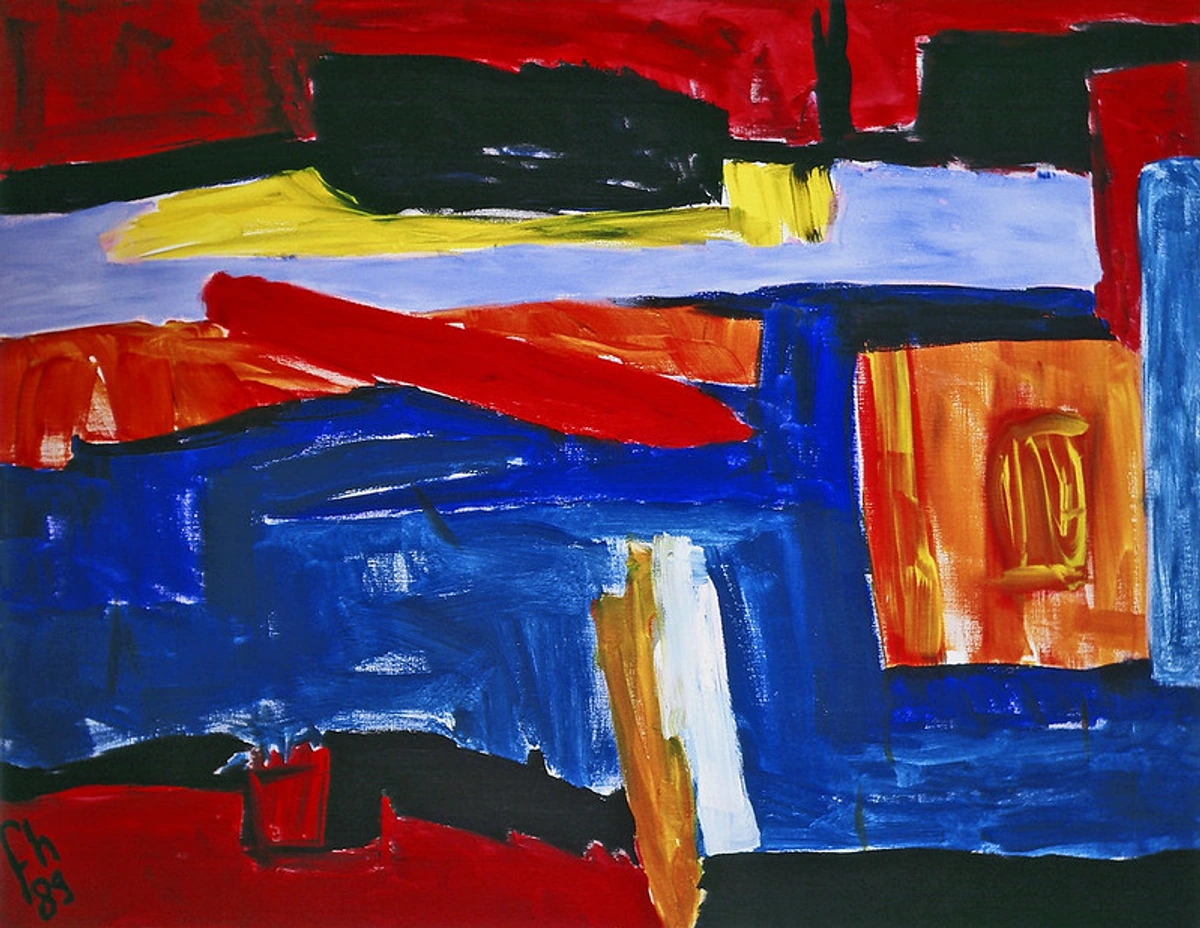
https://www.flickr.com/photos/abstract-art-fons/30634352376, https://creativecommons.org/licenses/by/2.0/
Social Media as My Studio Window: Instagram, Pinterest & Beyond
Social media, for an artist, isn't just about showing finished pieces; it's about opening a window into the creative process, the mess, the magic, and the artist themselves. It's also where I started to deliberately cultivate my artistic brand – ensuring that every post, every interaction, felt like an authentic extension of my studio and my artistic vision, a consistent thread in the vibrant tapestry of my digital presence.
Instagram: The Visual Diary
Instagram quickly became my visual diary. It’s where I share snippets of my creative flow: embracing intuition in abstract painting, works in progress, and the occasional perfectly imperfect studio shot. The pressure to post consistently can be a bit much – I once spent an hour trying to get the perfect flat lay for a process shot, only to decide a candid, slightly messy studio shot was far more 'me.' Authenticity trumps perfection every single time, especially when sharing abstract art, which by its nature is about raw expression. Concrete examples that resonate include close-ups of specific brushstrokes, palette knife textures, time-lapses of a painting's evolution, or even the drying paint, letting viewers peek into the making of abstract art. Its primary benefit? Building a narrative around your process, fostering deeper connection and trust. Oh, and a quick tip I learned the hard way: always add good alt text to your images. It’s not just for accessibility (which is vital!) but also helps search engines understand what your art is about, giving your work another chance to be discovered. I honestly spent months just posting without it, and it was like muttering my art's description to myself in a crowded room – nobody heard!
Pinterest: Curating Inspiration and Discovery
Pinterest surprised me. I initially thought it was just for recipes and home decor, but it’s a powerful visual search engine and a fantastic tool for artists. It’s not just about sharing my art; it's about curating inspiration boards, sharing my influences, and ultimately, allowing my work to be discovered by people searching for abstract art, decorating their homes, or finding art for minimalist interiors. Learning using Pinterest effectively as an artist was a game-changer for driving traffic back to my website. Beyond just 'my art' boards, I've found success with boards like 'Color Palettes I Love,' 'Abstract Art Inspiration,' 'My Studio Vibe,' or 'How to Decorate with Abstract Art.' Showing how your art fits into real-world settings (even mock-ups) or as part of a curated aesthetic is incredibly effective here. Its core strength lies in long-term discoverability and traffic generation, acting like a visual roadmap to your website for those actively seeking inspiration.
Platform | Primary Use for Abstract Artists | Specific Content Examples | Primary Goal |
|---|---|---|---|
| Visual Diary, Process Shots, Direct Engagement, Storytelling | Time-lapses, brushstroke close-ups, studio tours, live Q&As | Building brand, fostering connection, immediate engagement | |
| Visual Search Engine, Inspiration Curation, Traffic Driver, Long-term Discovery | Mood boards, 'shop the look' home decor, abstract art styles, color theory boards | Driving qualified traffic, long-term visibility |
Experimenting Beyond the Mainstays: Trying (and sometimes failing gracefully)
Beyond Instagram and Pinterest, I felt compelled to explore other digital avenues. It’s a bit like trying out new brushes – some just don't feel right, but you never know until you put paint to canvas. The key, I’ve learned, is to understand where your audience (the people who appreciate your specific abstract artistic style) spends their time.
- TikTok: Great for short, engaging process videos – though I’m still mastering the art of a 15-second paint pour without getting paint everywhere, or accidentally deleting my draft. It offers massive reach for viral content, but can be incredibly time-consuming to get 'right' and demands a fast pace.
- YouTube: For longer studio vlogs, deep dives into abstract art techniques, or behind-the-scenes looks at large-scale commissions. It builds deeper engagement and authority but requires high-quality video production and consistent effort.
- Behance: A more traditional, portfolio-style presentation for showcasing completed projects and series. It’s excellent for professional portfolios and connecting with art directors or clients, but less for day-to-day engagement or direct sales.
It’s okay to try something, realize it's not a fit, and move on. I once spent an entire afternoon trying to make a viral TikTok, only to upload a video of my cat 'helping' with a painting. It got more likes than my actual art. Go figure. The digital landscape changes faster than my ability to remember my passwords (which reminds me, I should probably update those), so adaptability is crucial. What online platform has surprised you the most, either positively or negatively, in your creative journey?
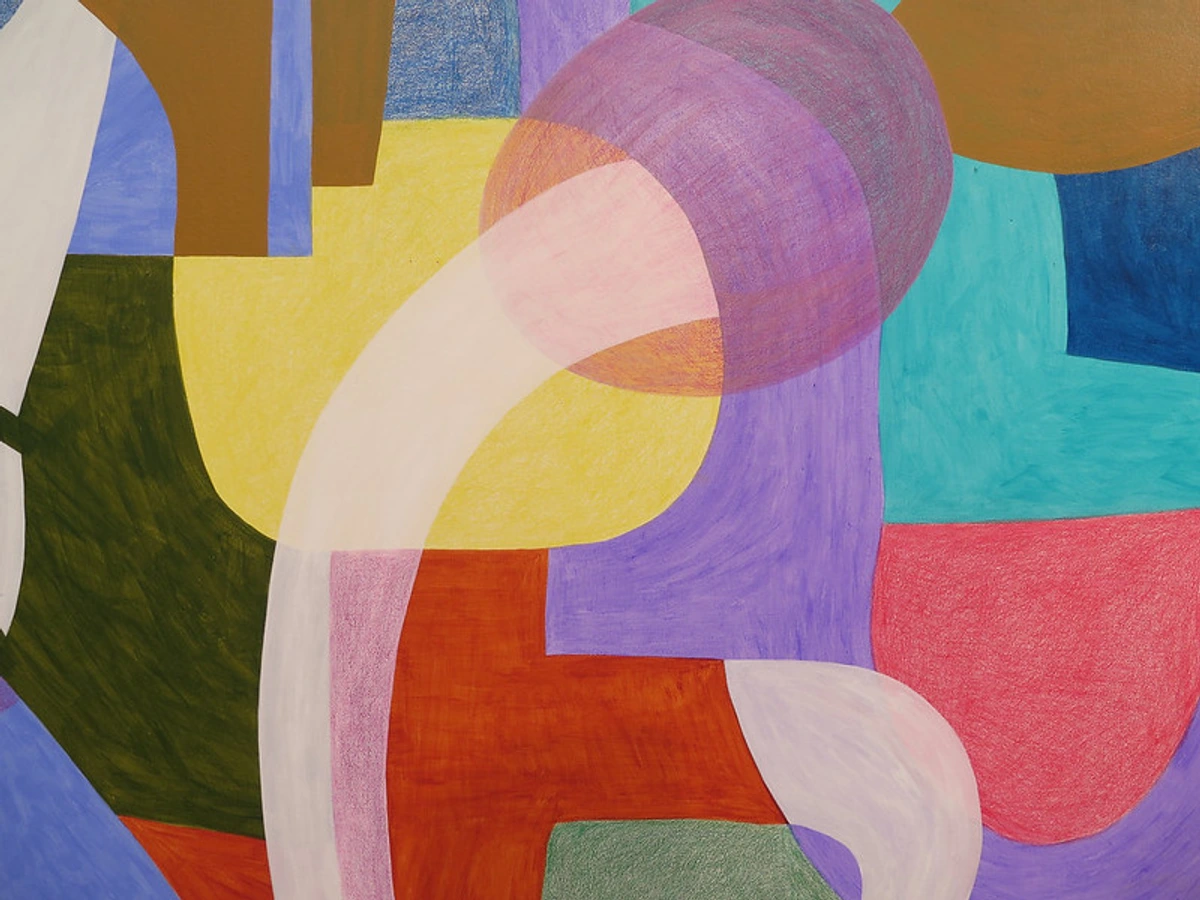
https://www.flickr.com/photos/42803050@N00/31171785864, https://creativecommons.org/licenses/by-nd/2.0/
The Art of Connection: Online Communities & Marketplaces
Beyond my own platforms, online art communities and marketplaces became crucial for connecting with a broader audience and, importantly, other artists. It can feel a bit solitary in the studio, so finding a tribe online – a group of kindred spirits who understand why you spent six hours trying to get a particular shade of cerulean just right – has been invaluable. This extended network is where the magic of discovery truly unfolds, showcasing how diverse abstract art movements continue to evolve.
Marketplaces like Etsy or Saatchi Art offer a good starting point, especially for emerging artists, but they come with their own set of considerations. Navigating online art marketplaces: Etsy vs. Saatchi was a whole education in itself, weighing visibility against commission fees. When engaging in communities (think Reddit's r/AbstractArt, Facebook groups for artists, or specialized art forums), the real value comes from authentic interaction: asking genuine questions, offering constructive feedback, sharing knowledge about the ultimate guide to abstract expressionism, or even discussing the art of intuitive painting. It's not just about self-promotion; it’s about genuine engagement, participating in themed challenges, sharing useful resources like tutorials or book recommendations relevant to abstract art, or even collaborating on projects with other artists. Sometimes, the connections you make online can even lead to more traditional opportunities, such as learning how to find galleries accepting new artists.
![]()
https://www.rawpixel.com/image/5924320/photo-image-background-public-domain-art, https://creativecommons.org/publicdomain/zero/1.0/
And a word of caution: always be mindful of the legal aspects. Understanding copyright for your art style and the terms of service for any marketplace you use is as important as signing your canvas. Consider watermarking your images or adding clear licensing information to your website to protect your digital assets. Seeing works from artists like Gerhard Richter or Christopher Wool online also helps put my own journey in perspective; their digital presence, even if curated, reminds us that even the most established artists navigate the public eye, albeit on a different scale. Richter’s meticulous documentation of his painting process, for instance, offers a subtle form of digital engagement, while Wool’s bold, often text-based abstractions translate powerfully to digital screens, demonstrating how established artists manage their digital footprint and convey impact. Their work, rich in texture and emotional depth, shows us the enduring power of abstract expression across mediums.
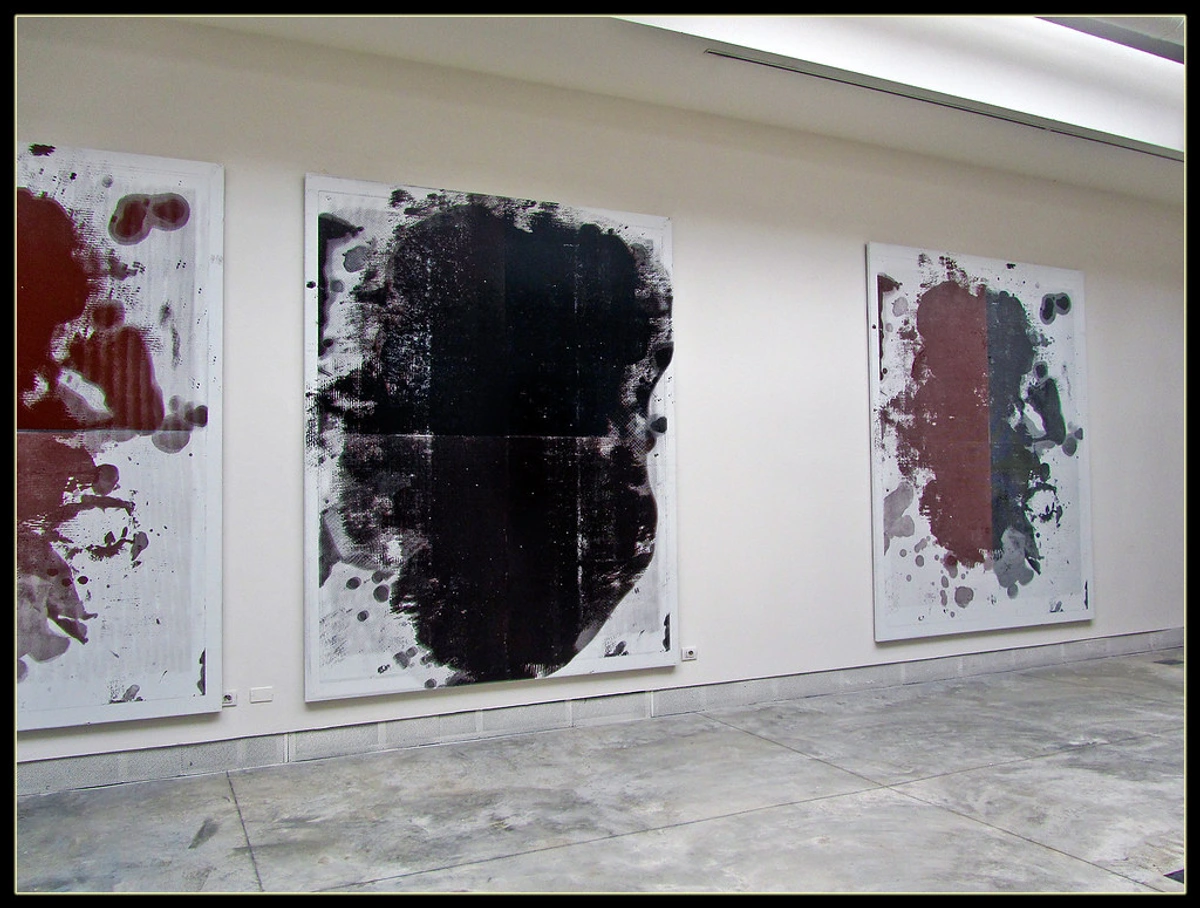
https://live.staticflickr.com/6195/6087778411_164f0d9a2f_b.jpg, https://creativecommons.org/licenses/by-nc-nd/2.0/
Finding My Voice Online: Content and Authenticity
This is perhaps the most important lesson. After all the strategies for websites and social media, the core of it all is connection. And in a crowded digital space, simply showing pretty pictures isn't enough to build that connection. People connect with stories, with passion, and with authenticity. My abstract art, which often involves deep personal emotion and exploring texture, needs context. What truly appeals about abstract art in the digital age is its ability to evoke emotion and personal interpretation through form, color, and composition, even without the tactile experience. Digital platforms can highlight these elements in new ways, from animated color studies to interactive views of textured pieces.
I realized I had to share why I paint, what inspires me, and the journey of each piece (from my studio to your wall). This meant being vulnerable, sharing moments of frustration alongside triumph. For instance, a simple Instagram caption detailing a creative block I overcame while mixing pigments for a piece, or a blog post illustrating the emotional language of color in abstract art I used, resonates far more deeply than just the final image. It also meant cultivating a consistent visual brand identity – not just my artistic style, but the consistent look and feel of my online presence that instantly says 'this is my work.' Think about it: a specific font for your website, a recurring color palette in your social media posts, a consistent quality to your images, even a distinct way of writing your captions. All these elements, when harmonized, build instant recognition for your unique art style. It meant letting my personality shine through, even the slightly quirky bits. It’s about building a relationship, not just making a sale. It’s about helping people decode abstract art through my perspective.
The Quiet Power of the Email List
Crucially, building an email list became an invaluable tool here. While social media is great for discovery, an email list is like having a direct, personal line to your most engaged audience, bypassing fickle algorithms. It’s where you can share exclusive insights, offer early access to new collections, or simply tell a longer, more intimate story about your latest obsession. Think of it as your most exclusive gallery opening, always open, always personal. It’s not just about selling; it's about nurturing a community of true art lovers who genuinely want to hear from you. How do you cultivate authenticity in your online presence?
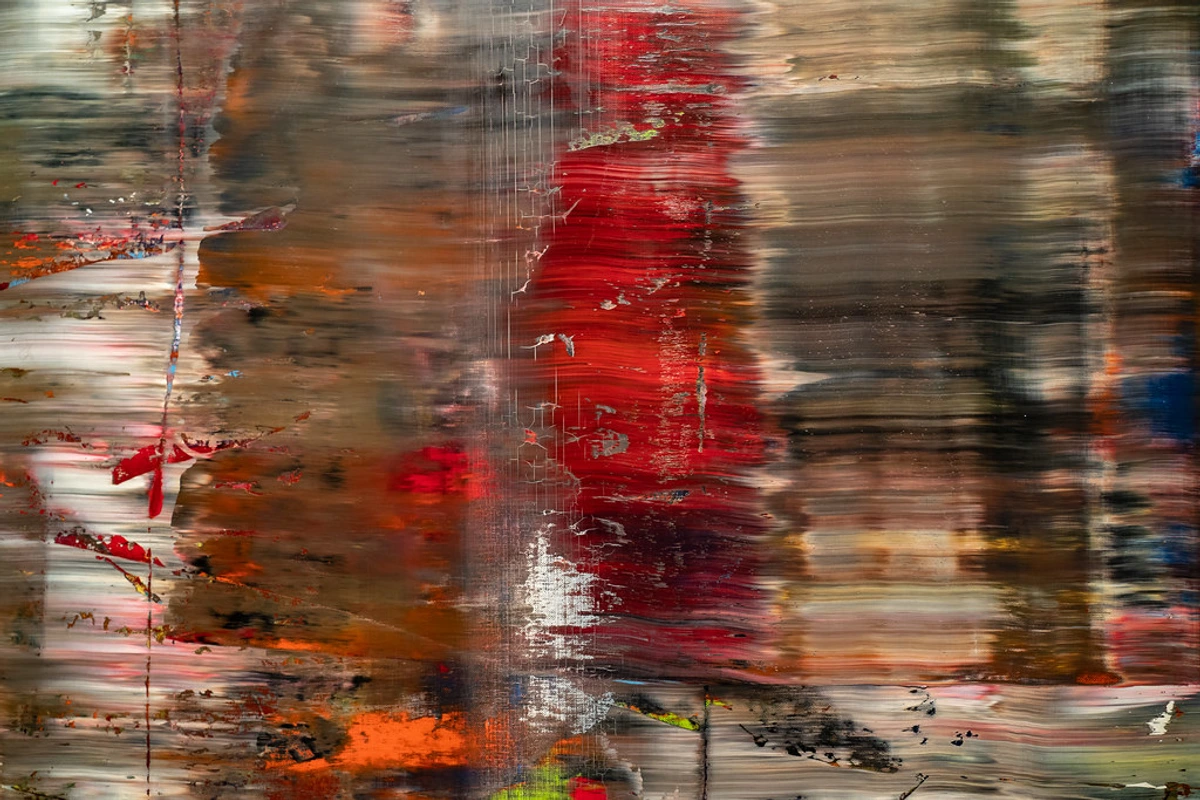
https://live.staticflickr.com/65535/53064827119_1b7c27cd96_b.jpg, https://creativecommons.org/licenses/by-nc-nd/2.0/
The Ongoing Journey: Learning, Adapting, and Not Giving Up
Building an online presence for abstract art is not a destination; it's a continuous journey, much like my artistic evolution. There are good days when posts go viral (well, for me, 'viral' means more than 10 likes, maybe even a comment that isn't from my mom!), and bad days when I wonder if anyone is even out there listening. Like that one time I accidentally posted a photo of my grocery list instead of a painting. Luckily, my audience just thought it was a new conceptual piece – phew! But through it all, the drive to create and share remains.
The digital landscape is ever-changing. What worked yesterday might not work tomorrow. It requires a willingness to learn, adapt, and experiment constantly, from figuring out the newest social media trend (I’m still trying to understand Reels, to be honest) to understanding the nuances of SEO for an artist's website. The role of texture in abstract art might be timeless, but how I present it online is not. It's a marathon, not a sprint, filled with small victories and occasional stumbles. My art journey, much like my digital one, is always evolving. And who knows, perhaps you'll even visit my museum in s-Hertogenbosch someday! The ultimate goal, after all, is to connect the art with the viewer, wherever they may be.
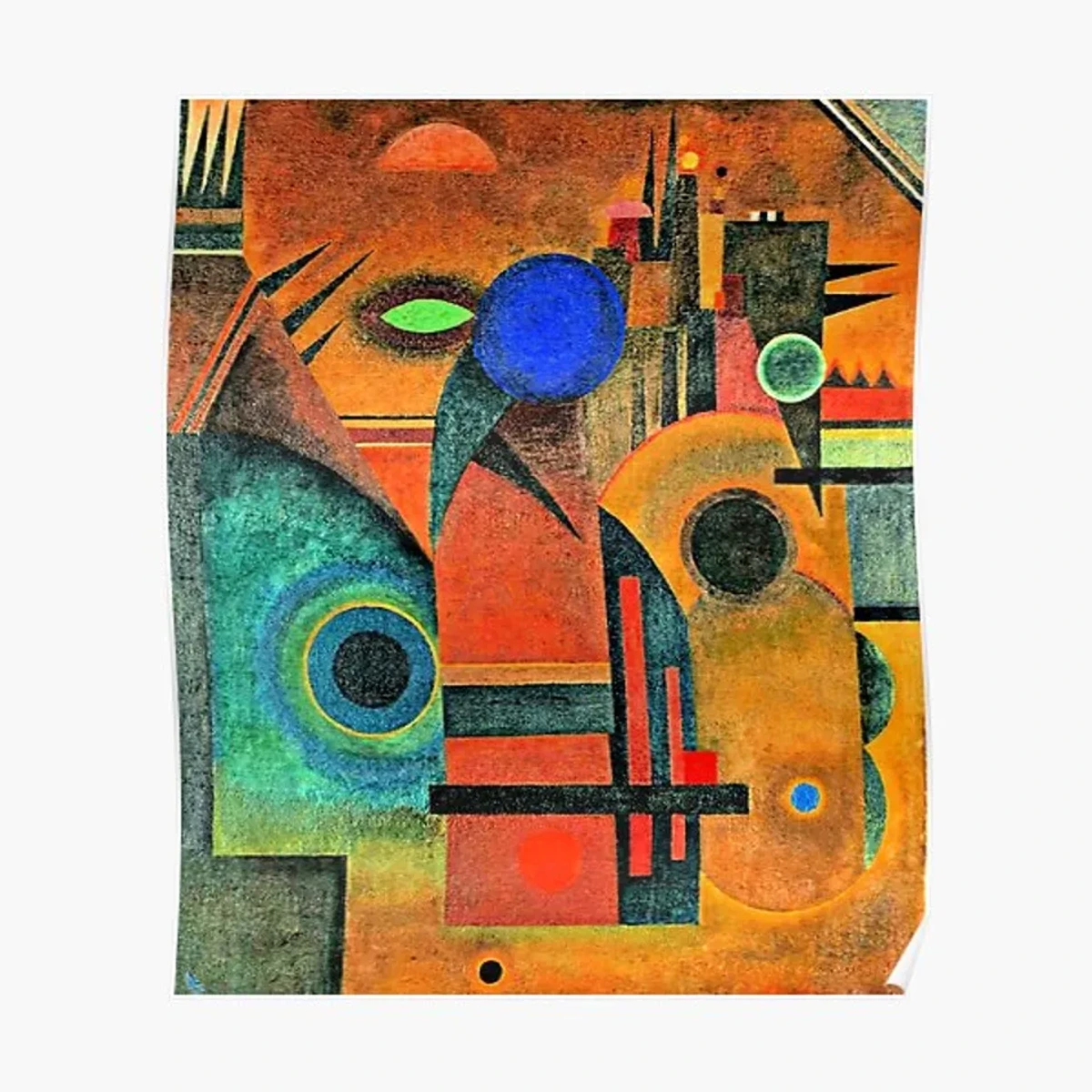
Printerval.com, https://creativecommons.org/licenses/by-nc/4.0/
Frequently Asked Questions (FAQ)
Here are some common questions I get asked (or ask myself!) about marketing abstract art online:
- Q: How do I choose the best platform for my art?
- A: Start with platforms that are visually driven, like Instagram and Pinterest. Research where your ideal audience spends their time. Don't try to be everywhere at once; focus on a few platforms you can manage well and where your artistic style resonates.
- Q: How often should I post on social media?
- A: Consistency is more important than frequency. Find a schedule that you can realistically maintain without burning out. For many artists, 3-5 times a week on Instagram is a good starting point, mixing finished pieces with process shots and personal insights.
- Q: Is it really necessary to have a website?
- A: Absolutely. Your website is your home base, your professional portfolio that you fully control. Social media platforms can change algorithms or disappear, but your website remains your consistent brand presence and the ultimate place for customers to buy art.
- Q: How do I determine pricing for my abstract art online?
- A: Pricing can feel like an art in itself! Consider factors like the size of the piece, materials used, the time invested, your experience level, and market demand. Research what similar artists are charging on marketplaces and galleries. Don't undersell yourself, but be realistic, especially when starting out. You can adjust as your reputation grows. And don't forget the psychological aspect: clearly articulating your artistic process, the emotion behind your work, and the unique story of each piece helps collectors understand and appreciate its value beyond just canvas size. It's about selling the experience and the soul, not just the object.
- Q: What's the most challenging part of online art marketing?
- A: For me, it's balancing the time spent creating art with the time spent marketing it. It's also the constant need to adapt to new trends and algorithms while staying true to my artistic voice. But the reward of connecting with people who truly appreciate my work makes it all worthwhile.
- Q: How do I handle creative blocks or negative feedback online, especially with personal abstract work?
- A: Creative blocks are part of the journey; sometimes stepping away or revisiting art inspirations helps. For negative feedback, remember it's often subjective and not a reflection of your worth. It's okay to feel sensitive when putting such personal work out there. Focus on constructive criticism, learn from it, and let the rest roll off. Your authentic voice, like that of Gerhard Richter, is unique and not for everyone – and that's perfectly fine.
Conclusion
Building an online presence for abstract art has been a challenging, often amusing, and incredibly rewarding journey. It's transformed from a 'necessary evil' into an integral part of my creative process and how I connect with the world. It’s about sharing a piece of my soul and finding others who resonate with it, no matter where they are on the globe. So, take a deep breath, pick up your digital brush, and start painting your online canvas. Don't be afraid to experiment, to be vulnerable, and to let your authentic voice shine through. The world, or at least a very interested corner of it, is waiting to discover your art. My challenge to you: choose one platform you've been hesitant about and commit to consistent sharing for a month. What digital step will you take today to connect your art with the world?




